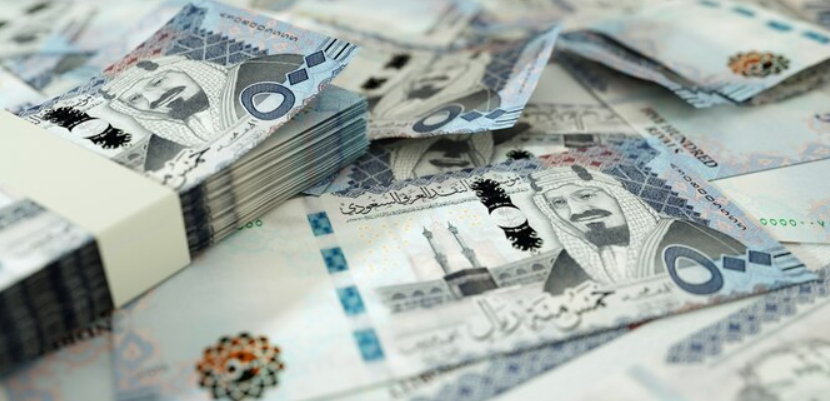
18 Jan 2025
RIYADH: Saudi Arabia’s bank loans surged to SR2.93 trillion ($782 billion) in November, marking a 13.33 percent year-on-year increase — the highest growth rate in 22 months.
According to figures from the Saudi Central Bank, also known as SAMA, corporate loans were the main driver, surging 17.28 percent to SR1.58 trillion.
This marks the highest annual growth for corporate loans among the lending activity data available in SAMA’s reporting since 2021.
Real estate activities led the charge, representing 21 percent of corporate lending and growing by 32 percent to SR328 billion.
Wholesale and retail trade accounted for 13 percent of corporate lending, reaching SR201.6 billion with an annual growth rate of 10.62 percent.
The manufacturing sector, a key component of Vision 2030’s economic diversification goals, represented 12 percent share at SR182.44 billion.
Electricity, gas, and water supplies contributed 11 percent to the total corporate share, growing significantly by nearly 27.74 percent to reach SR178.56 billion.
Notably, professional, scientific, and technical activities, though holding a smaller 0.53 percent share of corporate credit, witnessed the most significant surge, with a 54.44 percent annual growth rate to SR8.38 billion.
Education loans followed real estate with the third-highest growth rate, increasing by 29.93 percent to SR8 billion.
On the personal loans side, which includes various financing options for individuals, the sector grew 9.05 percent annually to SR1.35 trillion. This expansion underscores the continued confidence in consumer lending and the Kingdom’s economic diversification strategies.
According to Standard Chartered’s Global Market Outlook for 2025, lower interest rates are expected to boost private sector growth, particularly benefiting borrowing-sensitive industries in Saudi Arabia, the UAE, and Qatar.
The report highlighted that despite a forecasted slowdown in global growth from 3.2 percent to 3.1 percent, the Gulf Cooperation Council is poised to remain a bright spot, driven by robust non-oil sector expansion and strategic investments that support economic diversification.
Saudi Arabia’s economic transformation under Vision 2030 exemplifies a coordinated effort across government institutions, financial sectors, and private enterprises to drive sustainable growth and diversification.
Sectors like education, science and technology, and utilities are gaining significant momentum, fueled by substantial funding aimed at enhancing their contribution to the nation’s GDP.
The Kingdom is making significant investments in research and development, with the government accounting for the largest share of expenditure.
In 2025, education represented 16 percent of the national budget, employing the highest percentage of R&D workers and underscoring its pivotal role in expanding research capabilities.
Additionally, the surge in real estate activity reflects the broader infrastructure and giga-projects in progress, reinforcing the nation’s development agenda.
Recent shifts in global monetary policy, mirrored by the Saudi Central Bank’s interest rate adjustments in line with the US Federal Reserve, are set to make borrowing more affordable.
Lower interest rates will further stimulate lending, supporting key industries and accelerating the Kingdom’s ambitious transformation.
Strong capital buffers
According to data from SAMA, Saudi banks’ regulatory capital to risk-weighted assets stood at 19.2 percent in the third quarter of 2024, down slightly from 19.5 percent a year earlier.
Despite this modest decline, the ratio remains well above the Basel Committee on Banking Supervision’s minimum requirement of 8 percent, reflecting the strong capitalization and financial resilience of the Kingdom’s banking sector.
The Tier 1 capital ratio, which measures the core capital banks hold to absorb losses relative to their risk-weighted assets, reached 17.7 percent.
Tier 1 capital primarily consists of high-quality capital such as common equity and disclosed reserves. This high ratio demonstrates the soundness of the banking system in supporting economic growth while safeguarding against potential risks.
According to a study by the International Monetary Fund, Saudi banks are well-capitalized, profitable, and resilient to severe macroeconomic shocks.
Solvency stress tests and sensitivity analyses indicate their ability to withstand adverse scenarios, including significant downturns in real estate prices and sectoral loan portfolio defaults.
While banks demonstrate sufficient capacity to handle liquidity shocks, the report highlighted the need to address funding concentration risks.
The IMF noted that SAMA is refining its stress-testing methodologies and recommended enhancing data collection and monitoring large funding and credit exposures, particularly in relation to major construction and infrastructure projects.
To further strengthen credit risk modeling, SAMA should incorporate granular data on households and nonfinancial corporations, reflecting the evolving dynamics of the Kingdom’s economic transformation, according to the IMF.
SAMA data for the third quarter of 2024 indicated that non-performing loans net of provisions to capital fell to 2.1 percent, down from 2.2 percent in the same period last year.
This decline suggests an improvement in the quality of bank lending portfolios and the effectiveness of provisioning strategies.
According to the IMF, several factors help mitigate credit risk within the rapidly expanding real estate loan portfolio in Saudi Arabia.
Most mortgages are offered at fixed rates, which shield borrowers from interest rate fluctuations, and are structured with full recourse, minimizing the likelihood of strategic defaults.
Additionally, approximately 80 percent of retail borrowers are government employees, whose income is likely to remain stable during economic downturns. Furthermore, it is reported that the majority of mortgages are salary-assigned, providing further assurance of repayment.